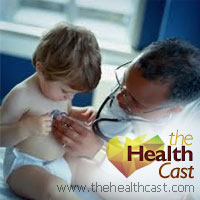
Here are some of the latest health and medical news developments, compiled by the editors of HealthDay:
Robin Roberts Returns to ‘Good Morning America’
Five months after receiving a bone marrow transplant, Robin Roberts returned to ABC’s “Good Morning America” Wednesday.
Roberts needed the transplant due to myelodysplastic syndrome, a blood and bone marrow disease. She began experiencing symptoms about a year ago and last appeared on TV’s top-rated morning show in August, the Associated Press reported.
“I have been waiting 174 days to say this. Good morning, America,” Roberts said on the show Wednesday.
She looked thin but had a big smile and didn’t bother to cover her hair loss with a wig. After the show, Roberts said she wasn’t tired and was working on adrenaline, the AP reported.
However, the bright studio lights affected her eyesight and she said she started having trouble seeing the teleprompters midway through the show. Bottles of hand sanitizer were placed nearby for people who come into regular contact with Roberts, whose immune system requires time to build back up.
The plan is for Roberts to work two or three days a week initially and for her health to be closely monitored, Tom Cibrowski, the show’s executive producer, told the AP.
Roberts will be busy her first week back. She is scheduled to co-host the show Thursday and perhaps Friday, to tape an interview with first lady Michelle Obama on Friday, and then to fly to California to participant in Oscars coverage and appear on Jimmy Kimmel’s post-Oscars show.
—–
Special K Red Berries Cereal Recalled Due to Risk of Glass Fragments
Three sizes of Special K Red Berries cereal are being recalled in the United States because they may contain glass fragments, the Kellogg Company says.
There have not been any reports of injuries associated with the products, according to the company.
The packages included in the voluntary recall include:
- 11.2 ounce packages, with a UPC Proof of Purchase Code: 38000 5992. Better if Used Before: DEC 02 2013 KNC 105 00:13 through DEC 02 2013 KNC 105 02:30
- 37.0 ounce packages with a UPC Proof of Purchase Code: 38000 20940. Better if Used Before Date: NOV 30 2013 KNB 107 17:31 through NOV 30 2013 KNB 107 20:05
- 22.4 ounce twin pack with a UPC Proof of Purchase Code: 38000 78356. Better if Used Before Date: Nov 30 2013 KNA 105 07:00 through NOV 30 2013 KNA 105 08:51 and Better if Used Before Date: NOV 30 2013 KNB 105 15:00 through NOV 30 2013 KNB 105 17:05
Kellogg says the recall does not include other package sizes or packages with the letter codes KXA, KXB or KXC.
Consumers with the recalled packages should not eat the cereal and should contact Kellogg at 1-800-962-1413 to get a replacement coupon, the company said.
—–
New Leprosy Test Quick and Inexpensive
A quick and inexpensive new test for leprosy can detect infections as much as a year before symptoms appear, researchers say.
This improves the chances that patients can be diagnosed and treated before they become permanently disabled or disfigured, The New York Times reported.
The test, which will cost $1 or less, provides results in less than 10 minutes and is far simpler than the current method of diagnosing leprosy, which involves cutting open nodules and looking for bacteria under a microscope.
“It works like a pregnancy test and requires just one drop of blood,” Malcolm Duthie, who led the test’s development at the Infectious Disease Research Institute in Seattle, told The Times. “I can teach anyone to use it.”
Each year, about 250,000 people worldwide get leprosy. It’s most common in Brazil, India, the Philippines, Indonesia and the Democratic Republic of Congo. Between 150 to 250 cases of leprosy are diagnosed in the United States each year, mostly in immigrants.
—–
Prescription Painkillers Behind Many Overdose Deaths: Report
Prescription opioid painkillers are responsible for almost three of every four medication overdose deaths, a new government report shows.
The troubling statistic, published Tuesday in the Journal of the American Medical Association, is based on data gathered by researchers from the U.S. Centers for Disease Control and Prevention. Although the results reflect overdose deaths that occurred in 2010, the findings come at a time when federal health officials are weighing ways to stem the abuse of these powerful prescription medications.
“The big picture is that this is a big problem that has gotten much worse quickly,” CDC Director Dr. Thomas Frieden told the Associated Press Tuesday.
The actual number of overdose deaths also continued to rise. In 2010, there were 38,329 drug overdose deaths nationwide. Nearly 60 percent of all overdose deaths were linked to accidental overdoses of various prescription medications, the report found.
Opioid painkillers — which include OxyContin and Vicodin — were the biggest problem, contributing to 75 percent of medication overdose deaths.
Another type of medication that fueled the trend was anti-anxiety drugs such as Valium, contributing to almost 30 percent of overdose deaths.
A government panel of drug safety experts recommended that Vicodin and dozens of other medicines be subjected to the same restrictions as other narcotics such as oxycodone and morphine. At the same time, hospitals have been establishing tougher restrictions on painkiller prescriptions and refills, the AP reported.
—–

